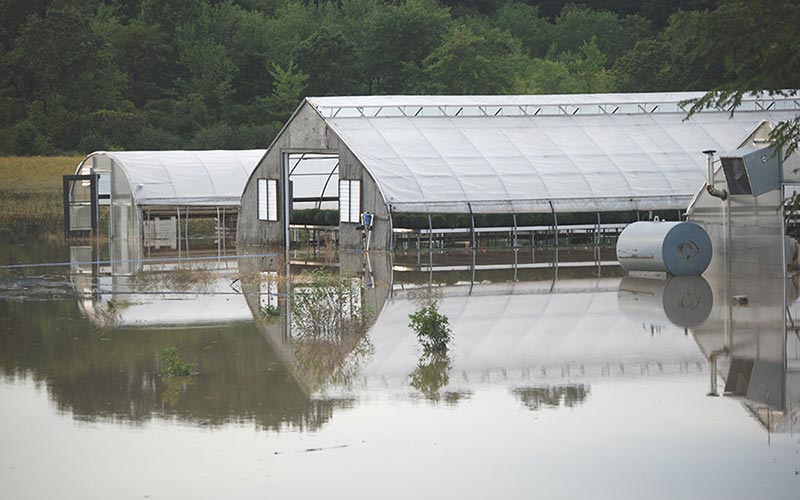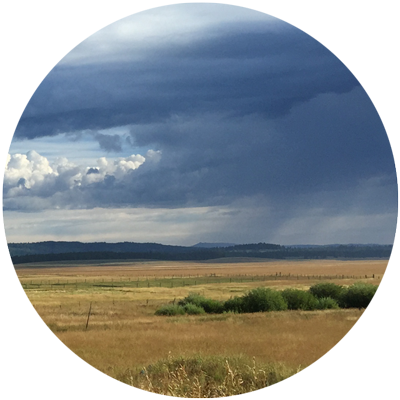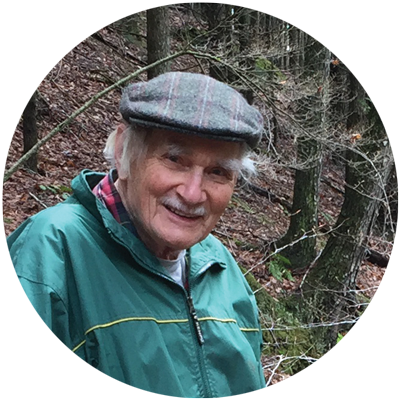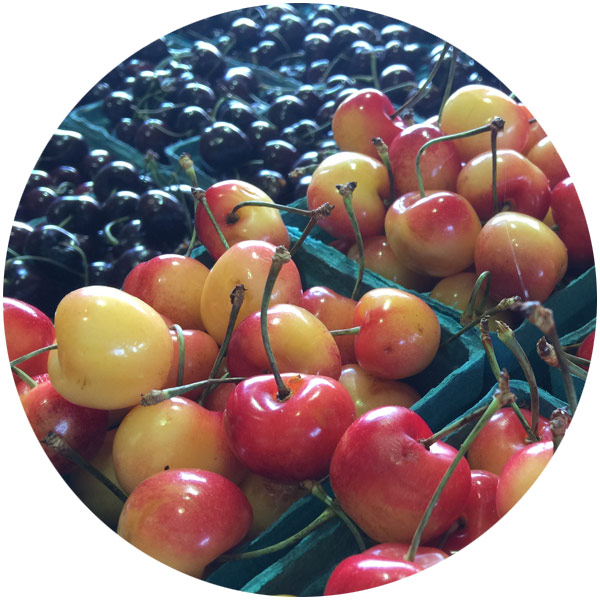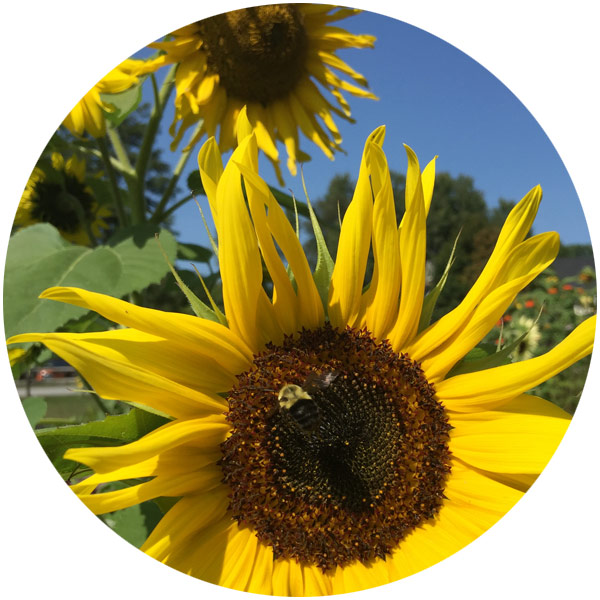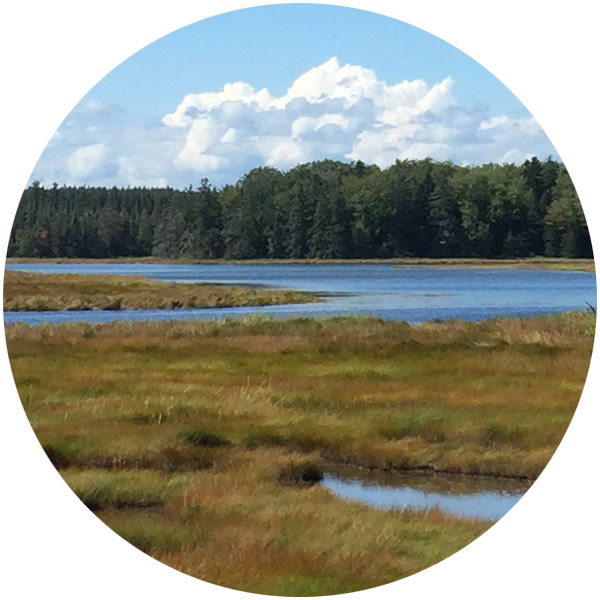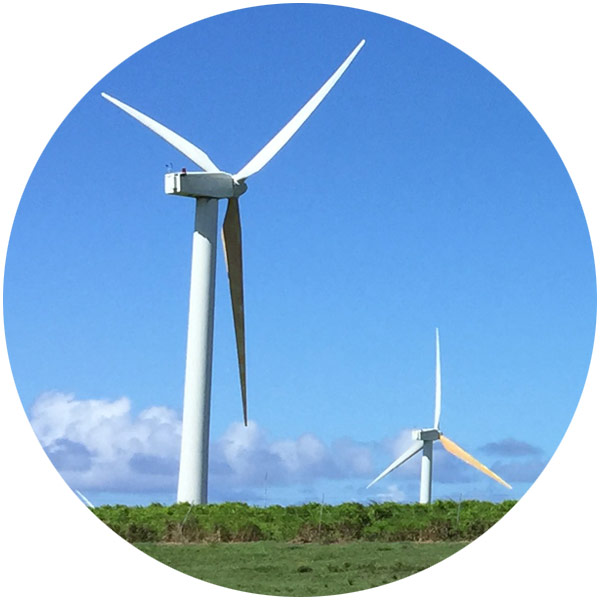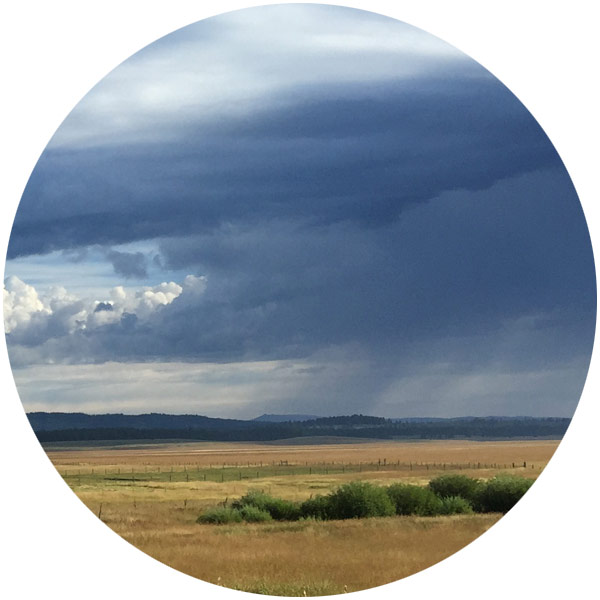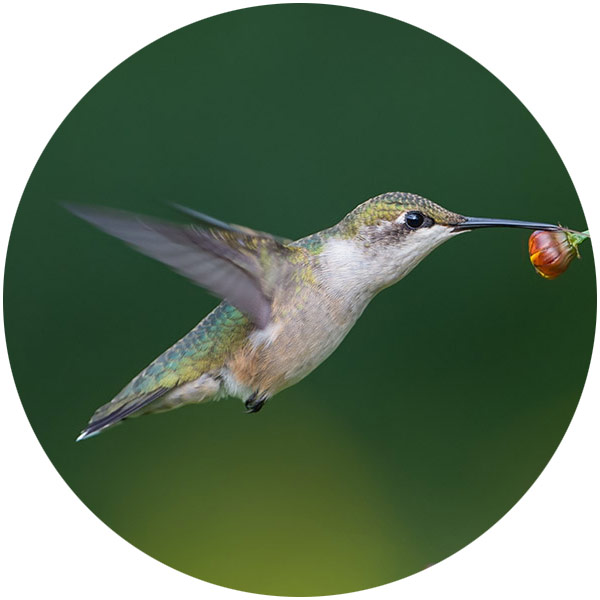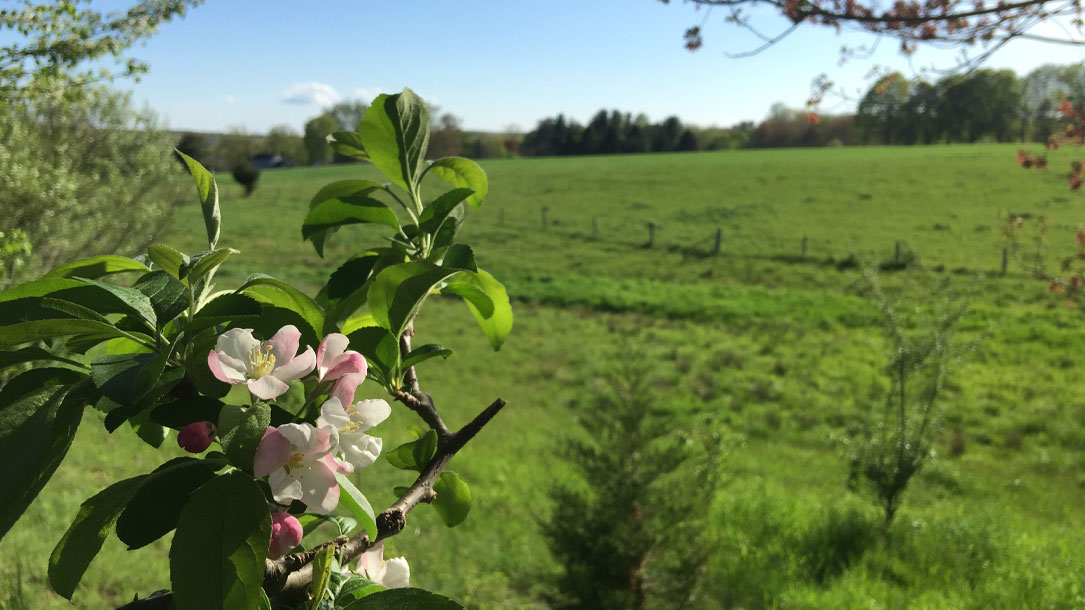
Reflections for land trusts, May 2019
Have you ever asked what the role of the United States is with regard to climate change and how that has played out over time?
You can now watch an animated portrayal of global climate emissions since 1750.
A recent article from Vox notes that “humans are pumping more carbon dioxide into the atmosphere at an accelerating rate. But climate change is a cumulative problem, a function of the total amount of greenhouse gases that have accumulated in the sky. Some of the heat-trapping gases in the air right now date back to the Industrial Revolution. And since that time, some countries have pumped out vastly more carbon dioxide than others.”
The animation shows the cumulative carbon dioxide emissions from the top emitters and how they’ve changed over time.
The good news is that land conservationists and people like you (who care), including a lot of those working with farmers and ranchers as noted below, are working to accelerate how they are slowing down climate change.
I’m hopeful that other land trusts will elevate the need to go beyond conservation as we have known it and raise the importance of slowing down climate change while there is still time to retain the plants, animals, water, and communities we cherish.
It will take more than land protection in North America to provide a meaningful climate impact (although it’s a good place to start). Rebuilding soils (forest, prairie, and agricultural), advocating for energy conservation, accelerating renewables, and managing land for long-term carbon sequestration are now part of a future necessary for conservation to thrive.
I look forward to hearing from you about examples of land trusts doing just that. In the meantime, see what you think of the three below.
Best,

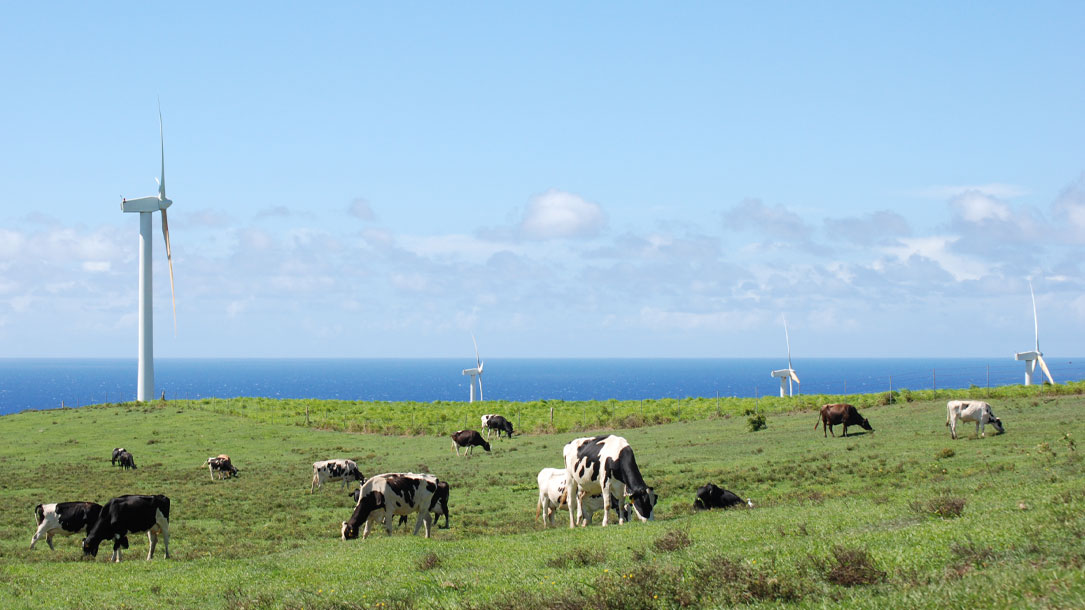
Reflections for land trusts, April 2019
As spring shifts into gear throughout the country, climate change is increasingly on peoples’ minds.
There is a growing awareness that conserving the places we love will require that we change our approach to conservation. It will take new partnerships and building a more inclusive and responsive “tent for change.” Research currently postulates that natural solutions could play a role of up to 30% in our work to slow down climate change; the other 70% will need to come from switching to renewables and increasing energy efficiency.
This means ramping up natural solutions and thinking about renewables differently—not as something to fight—but instead as a solution we must embrace for long-term conservation. Changing our approach to climate change also means working to find ways to make renewables compatible with the plants, animals, and communities we are working to conserve, to the greatest extent possible.
And, it means bringing others along in the journey of helping to slow down climate change, soon. Unlike other challenges, when we decide to dramatically reverse climate change, things won’t “right themselves.” The impacts we are already seeing will last for generations. That’s why it’s inspiring to see conservation groups and other community groups, take leadership positions while there is still time.
I wanted to relay that the articles below are designed for you to skim and find something relevant to you—or to those you know. You may want to read them all or you may want to read one or two, or just watch the video. That’s totally OK. In fact, it’s expected given how busy everyone is. The good news is that you will be able to refer to them later on my website, should you want to read them again.
Best,

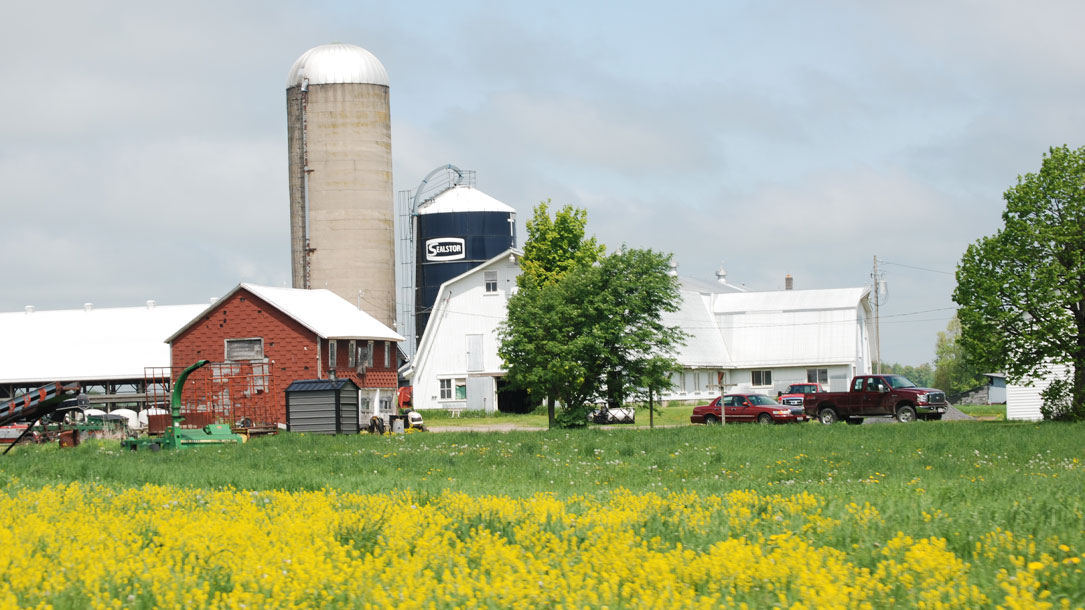
Reflections from Judy, March 2019
I wanted to share with you some really interesting research related to the viability of agriculture and wildlife habitat in relation to renewables and solar.
The news related to climate change is getting increasingly grim, with the vast majority of climate scientists (over 97%) stating that the window for action is closing.
That means that you and I—and the conservation groups who have pledged to conserve farms, forests, wildlife habitats, and special places—need to take action and encourage creative solutions to reduce fossil fuels as soon as we can. The longer we wait, the more species are at risk, and the more our communities face economic and health challenges.
Which is why it’s encouraging to see that organizations like The Nature Conservancy, National Audubon Society, and Scenic Hudson are ramping up their messaging to help people like you and me connect the dots—and empower conservation to partner with renewables as part of the solution.
Please join me in thinking about those who are grappling with the extreme weather of late. My heart goes out to them and their communities. I’m hopeful that we can support state and national policies to help provide support to those in need as well as connect the dots in a manner that will clarify the need to slow climate change down.

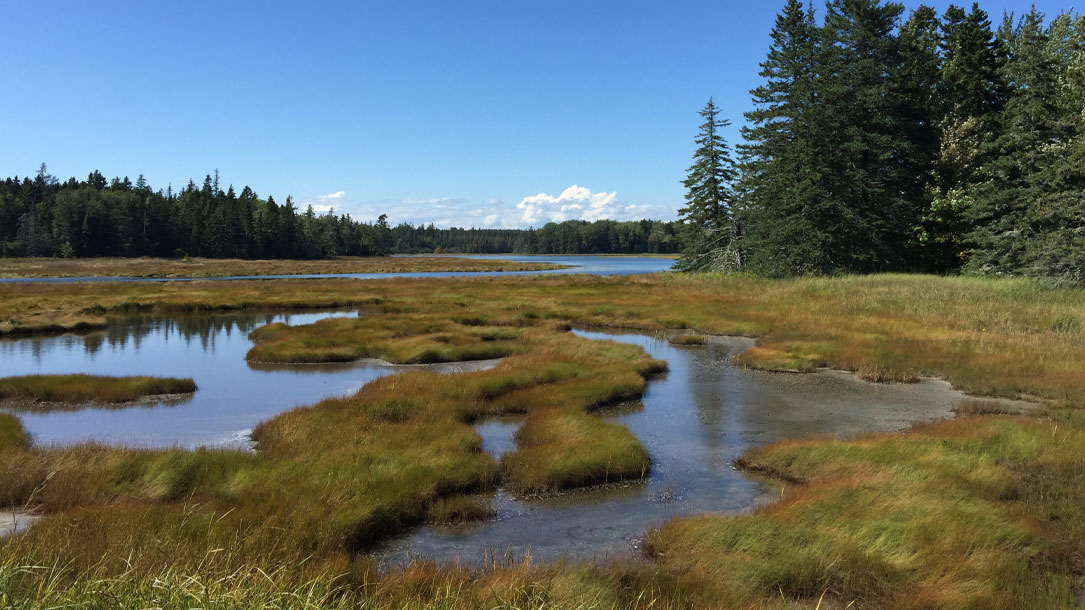
Reflections for land trusts, March 2019
There is some encouraging news out there in the world of climate change.
Land conservation groups are realizing that they need to rethink what it means to conserve land and water in “perpetuity” (for generations to come). That means that these groups are starting to help their communities understand what they can do to slow down climate change—beyond continuing “business as usual.”
The Nature Conservancy is increasingly helping to lead the way in this area by talking about the importance of renewable energy, energy conservation, and land conservation work for the benefit of plants, animals, and communities.
Smaller conservation groups, like the Taos Land Trust (check out their Facebook feed), are helping to connect the dots. Some groups are working to figure out how they could promote solar farms and wind installations, and partner with climate groups to motivate more people to act.
It’s not as hard as you might think. And it doesn’t require a ton of time. Check out Katharine Hayhoe’s TED Talk, as well as the examples below.
Best,

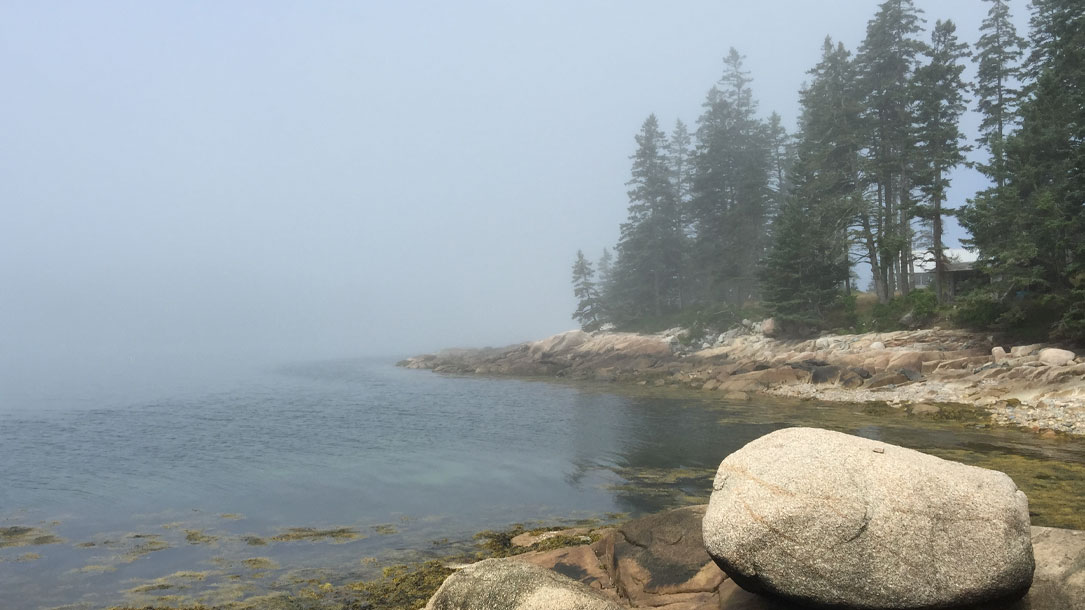
Reflections from Judy, February 2019
I don’t know about you, but here in upstate New York, I’m done with winter. The extreme cold, insane winds, yo-yo temperatures and rains…let’s move on and call it a day. I can’t wait for spring…
But the reality is that unless we slow climate change down—and soon—the weather is going to get increasingly extreme and erratic. That puts stress on farmers and those who make a living on the land as well as everyday folks like you and me. It also puts thousands of species at risk of extinction. We, as conservationists, take the long view and recognize how interconnected our lives are to the lands, waters, and communities we share.
That means we carry an added responsibility to elevate climate change because we know what’s happening. As people who understand and trust science, we see the future risks. We know that we have only 12-15 years to move to renewables…and that means changing our definition of how we approach land and water conservation—and what it needs for generations to come.
It’s a paradigm shift that we have to make. A generation from now, people will ask what you did to help. I think about that almost every day. I’m banking on the fact that together, we can make the change.

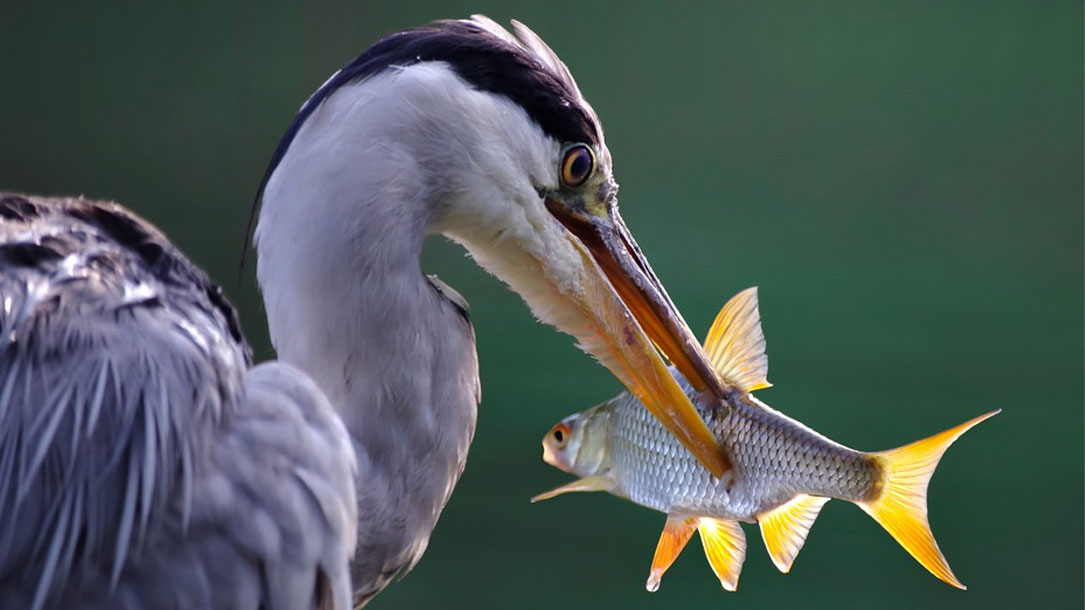
Reflections for land trusts, February 2019
The year is starting off in a very hopeful way. Land trusts are beginning to recognize that they can play a key role in slowing down climate change—and they are doing just that. It’s a natural place for land trusts to be.
The timing couldn’t be better as research has documented that climate change is accelerating, with wildlife and agriculture facing an ever-greater threat and communities grappling with more extreme weather.
Land trusts are, by nature, problem solvers. Add to that—they work with communities, have experience in partnerships and lobbying for conservation initiatives, and have pledged to conserve the lands and waters in their region…in perpetuity.
Slowing down climate change in a meaningful way—and fast enough to avoid massive species die-off and tremendous stresses to agriculture, our economy, and way of life—will take all of us.
Below are a couple of examples of land trusts taking action.
I’d love to hear your thoughts. If you know of other organizations or people who are doing inspiring work, please send me an email.
Best,

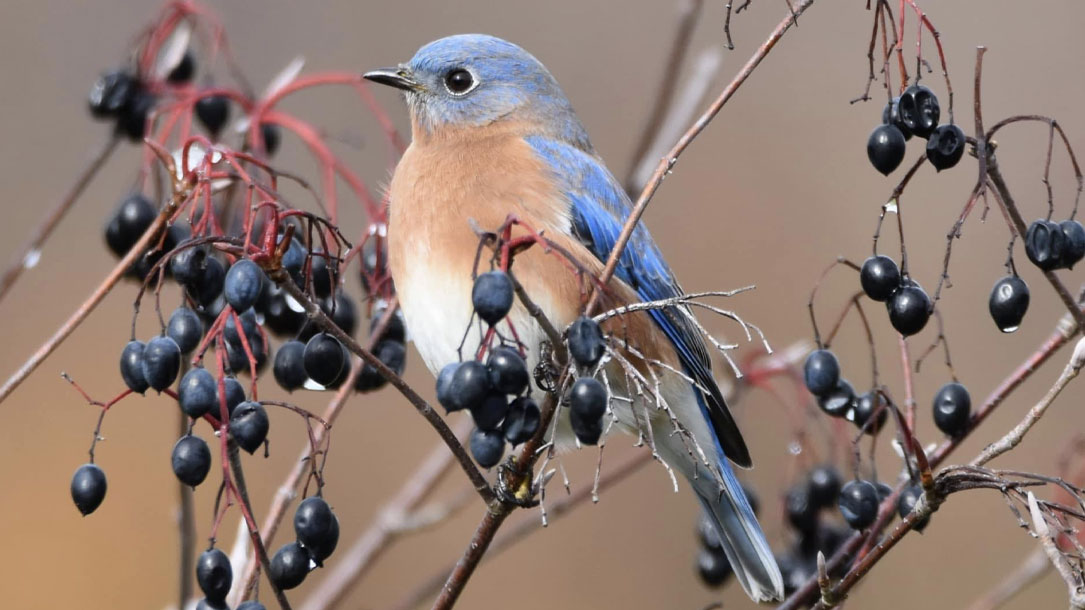
Reflections from Judy, January 2019
There have been some interesting weather events this week. Australia and New Zealand are literally cooking, and here in the northern hemisphere, we are experiencing crazy-cold weather. That’s not by chance. Science is linking warming oceans, the melting of polar ice, and deep freezes and heat events as related to climate change.
The impact on our communities, wildlife, agriculture, and cultural landscapes can’t be underestimated.
That’s why it’s good news that land trusts and the communities we live in are recognizing the urgency of slowing down climate change—including absorbing carbon pollution via trees and soils, and ramping up our renewables as fast as we can. This work is central to conserving the land and waters we love.
Thank you for caring and for inspiring others to take action. If you have topics you want me to cover on slowing climate change down, let me know.

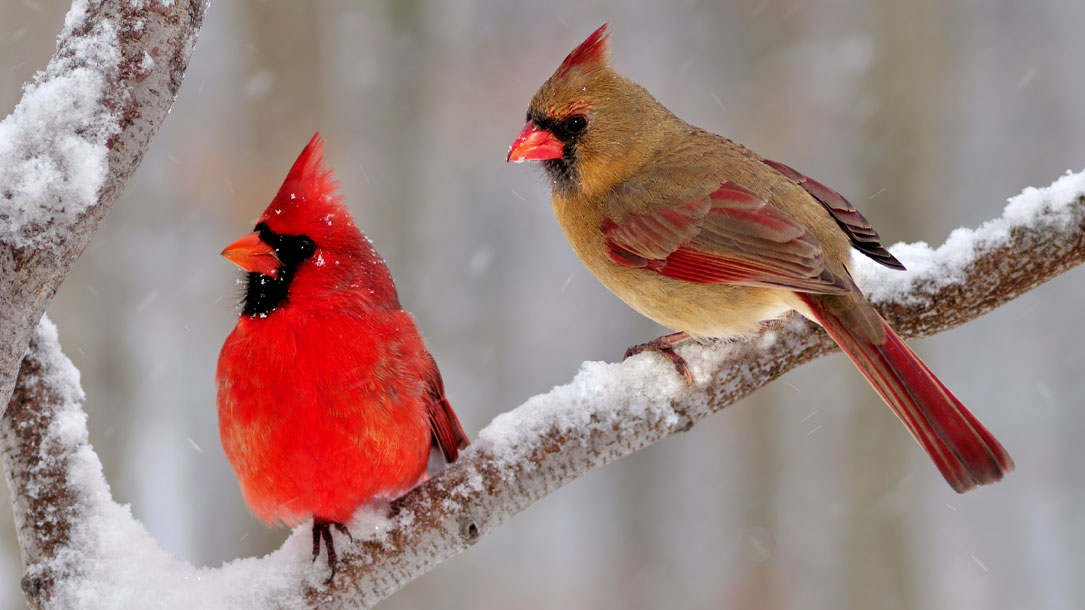
Reflections from Judy, New Year’s 2019
Happy New Year. I’ve been thinking about how we can start off the year with some inspiration and good news related to climate change. That’s not easy, as more research is documenting that climate change continues to accelerate.
To help us all re-energize and face the year with a willingness to lead, I thought I would share with you Hilma Bennett’s (my grandmother’s) recipe for creating a meaningful life. This recipe was written more than 60 years ago, but her ingredients hold true in our collective effort to face the biggest challenge conservation has—and will ever—face.
Recipe for Creating a Meaningful Life
3 cups of courage
2 cups of laughter
6 cups of energy, joy or zest
1¾ cups of tears
Mix the first three ingredients together well, moisten with tears as needed or necessary. Mixture should be soft but not sloppy, or sticky.
Thank you for caring and for your desire to help take action to slow down climate change. As conservationists, this means changing the paradigm. Our collective lives and much of what we treasure depends on it.
Best,

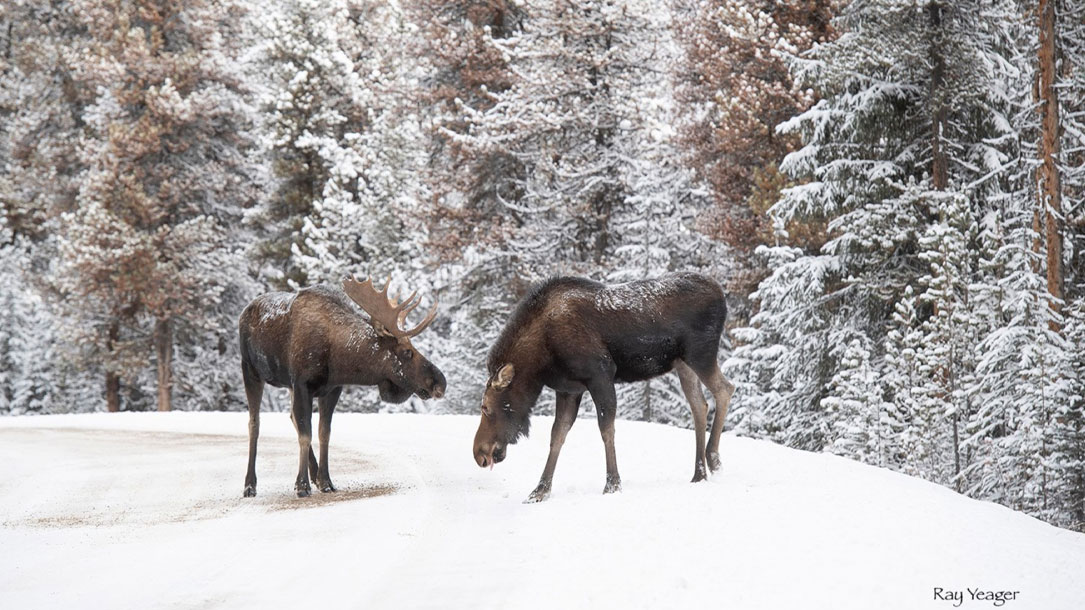
Reflections for land trusts, December 2018
I want to take a moment and say I’m thinking of all those who have dealt with horrific fires and extreme weather recently. It’s mind-boggling, and despair, even from afar, can be overwhelming.
Combine that with the recent report from the Intergovernmental Panel on Climate Change, and I’m witnessing considerable discussions at the land trust level wondering what they (we) can do to help slow down climate change in a meaningful way.
With as little as 10 – 30 years to make a significant difference—or risk massive species die-off, loss of agricultural lands, forest loss, and extreme weather—I applaud the realization that we can’t continue to conserve land as if climate change is a distant issue.
So, what can you and your local land trust do? Talk about it. That’s a critical step. Connect with shared values. Give people steps they can take (and not just supporting your land trust). Consider push-back, and help people see the connections.
You’ll be helping to end the “cone of silence” and connect the dots to what people care about. As you will see below, the majority of Americans want climate action. They also need help understanding what they can do to help.
You can also put your values where your money is and then talk about it, like Kestrel Land Trust is doing (see below). Thousands of individuals, colleges, nonprofits, and for-profit businesses are now divesting for financial, as well as ethical reasons. It’s a good way to inspire others and to grow the conversation.
Do you have a suggestion on topics or examples for the next Land Trusts Taking Action on Climate Change e-News? If so, send me an email. I’d love your ideas. I’ll be thinking of you over the holidays; I appreciate your willingness to take action.
Best,

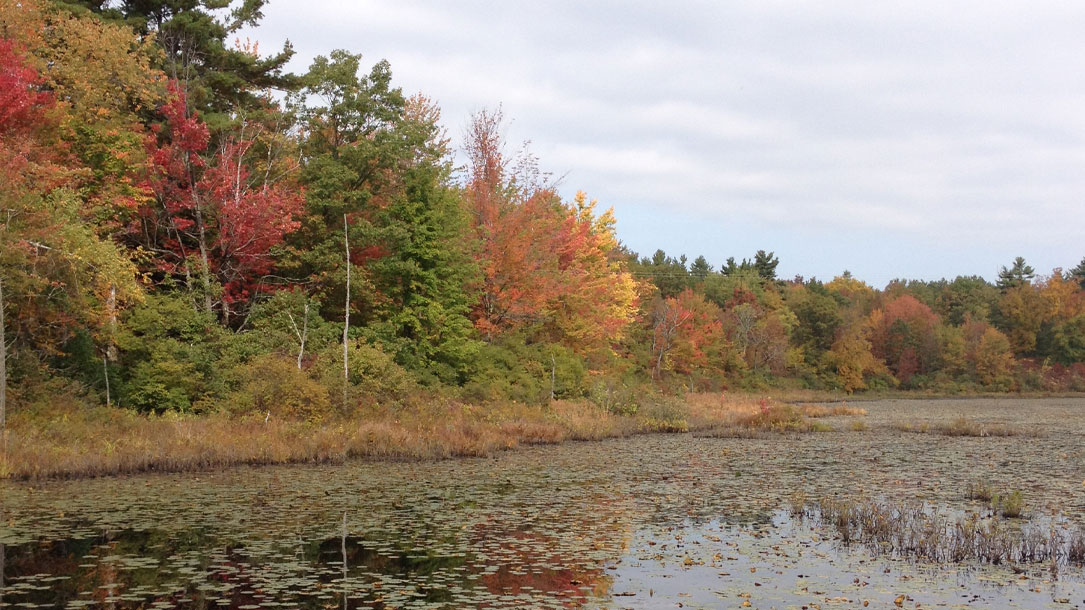
Reflections from Judy, November 2018
You probably heard about a sobering study that was released recently about the limited time we have to slow climate change down in a meaningful way (see below).
As a result I’m hoping that you and your local land trust are pondering what you can do beyond your current land conservation work to slow climate change down. Certainly, identifying ways to increase carbon sequestration at a faster rate, like the carbon farming featured below, or enhancing soil carbon with forests and prairies, is a very important approach.
However, given the seriousness of the situation, communicating the need for renewables, energy conservation, and how they are part of the conservation solution will be important to encourage and inspire support for local, regional, and state-wide initiatives – and conservation approaches. Check out the article on how solar could benefit agriculture, for example. We already know it can benefit pollinators. You and your land trust could start getting those stories out.
The majority of American’s want action on climate change; now we just have to make it a priority and link it to the lands and waters they love.
Best,


